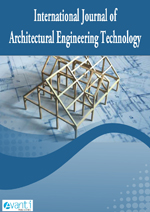Abstract
Computational Fluid Dynamics (CFD) has become practical design tool for indoor environment recent years and the application cases have been increasing. Though the improvement of the prediction accuracy of CFD is needed in connection with the upgrade of design quality in indoor environment and Heating, Ventilation and air-conditioning (HVAC) system, the prediction accuracy of CFD simulation depends on the understanding for the fundamentals of fluid dynamics and the setting of appropriate boundary and numerical conditions as well. Additionally, deeper understanding to a specific problem regarding indoor environment is also required. The series of this study aimed to provide with the practical information such as prediction accuracy and problematic areas related to CFD applications in air conditioning and ventilation, then performed benchmark tests and reported the results. Especially in this Part 4, benchmark test results for Air-conditioning airflows, Residential kitchen airflows and Fire-induced flow were introduced and discussed.
References
Ito K, Inthavong K, Kurabuchi T, Ueda T, Endo T, Omori T, et al. Benchmark Tests Associated with Applying CFD to Indoor Environmental Problems: Part 1 Benchmark test for isothermal/non-isothermal flow in 2D and 3D room model. Int J Archit Eng Technol 2015; 2(1): 50-71.
Ito K, Inthavong K, Kurabuchi T, Ueda T, Endo T, Omori T, et al. Benchmark Tests Associated with Applying CFD to Indoor Environmental Problems: Part 2 Benchmark test for crossventilation airflows and floor heating systems. Int J Archit Eng Technol 2015; 2(1): 72-48.
Ito K, Inthavong K, Kurabuchi T, Ueda T, Endo T, Omori T, et al. Benchmark Tests Associated with Applying CFD to Indoor Environmental Problems: Part 3 Benchmark test for numerical thermal manikins. Int J Archit Eng Technol 2015; 2(1): 99-124.
Momoi Y, Yamanaka T, Kotani H, Okaichi A. CFD of Airflows in Rooms with Anemostat Type: Part 5. CFD Simulation Using Measured Values of Velocity and Turbulence Parameters in Large Space as Boundary Conditions. Summaries of Technical Papers of Annual Meeting Architectural Institute of Japan 2001; 9: 775-776.
Ueda T, Tatenooka M, Murakami Y. The Simple Approximation of Anemostat-type Air diffusers in CFD Simulation: Part 3. Comparison with the Experiment. Technical papers of annual meeting of the Society of Heating, Air-Conditioning and Sanitary Engineers of Japan, (In Japanese) 2010; 9: 2339-2342.
Kondo Y, Akabayashi S, Kawase T, Ogata K, Yoshioka T. Study on Air-Conditioning, Ventilation System of Kitchen. : Part 7 Numerical Simulations of Flow and Temperature Distributions. Technical papers of annual meeting, the Society of Heating, Air-Conditioning and Sanitary Engineers of Japan (In Japanese) 1994; C-17: 201-204.
Kondo Y, Abe Y, Miyafuji A, Aizawa Y, Akagi K. CFD Modeling of Thermal Plume over a Cooking Pot and Experiments under Heating Condition, Indoor Temperature and Air Distributions of House Kitchens and Adjacent Living Rooms (Part 2). Architectural Institute of Japan, (In Japanese) 2008; 634: 1383-1390.
Momose T, Yamanaka T, Kotani H, Yamamoto A. Measurement and Modeling of Plume abobe Commercial Cooking Stoves. Architectural Institute of Japan, (In Japanese) 2003; 567: 49-56.
Kato S, Murakami S, Yoshie R. Experimental and Numerical Study on Natural Convection with Strong Density Variation along a Heated Vertical Plate, in 9th Symposium on Turbulent Shear Flows, 1993; 12-15.
Murakami S, Kato S, Yoshie R. Measurement of Turbulence Statistics in a Model Fire Room by LDV. ASHRAE Transactions, 1995; 101:287-301.

This work is licensed under a Creative Commons Attribution-NonCommercial 4.0 International License.




